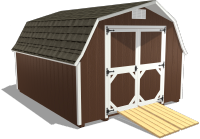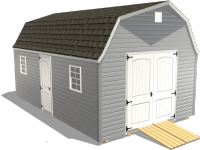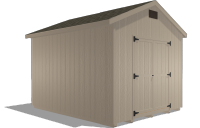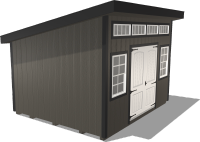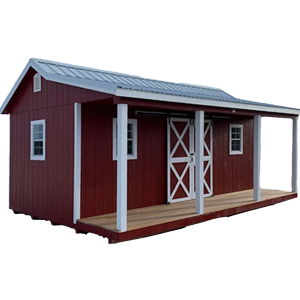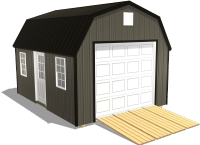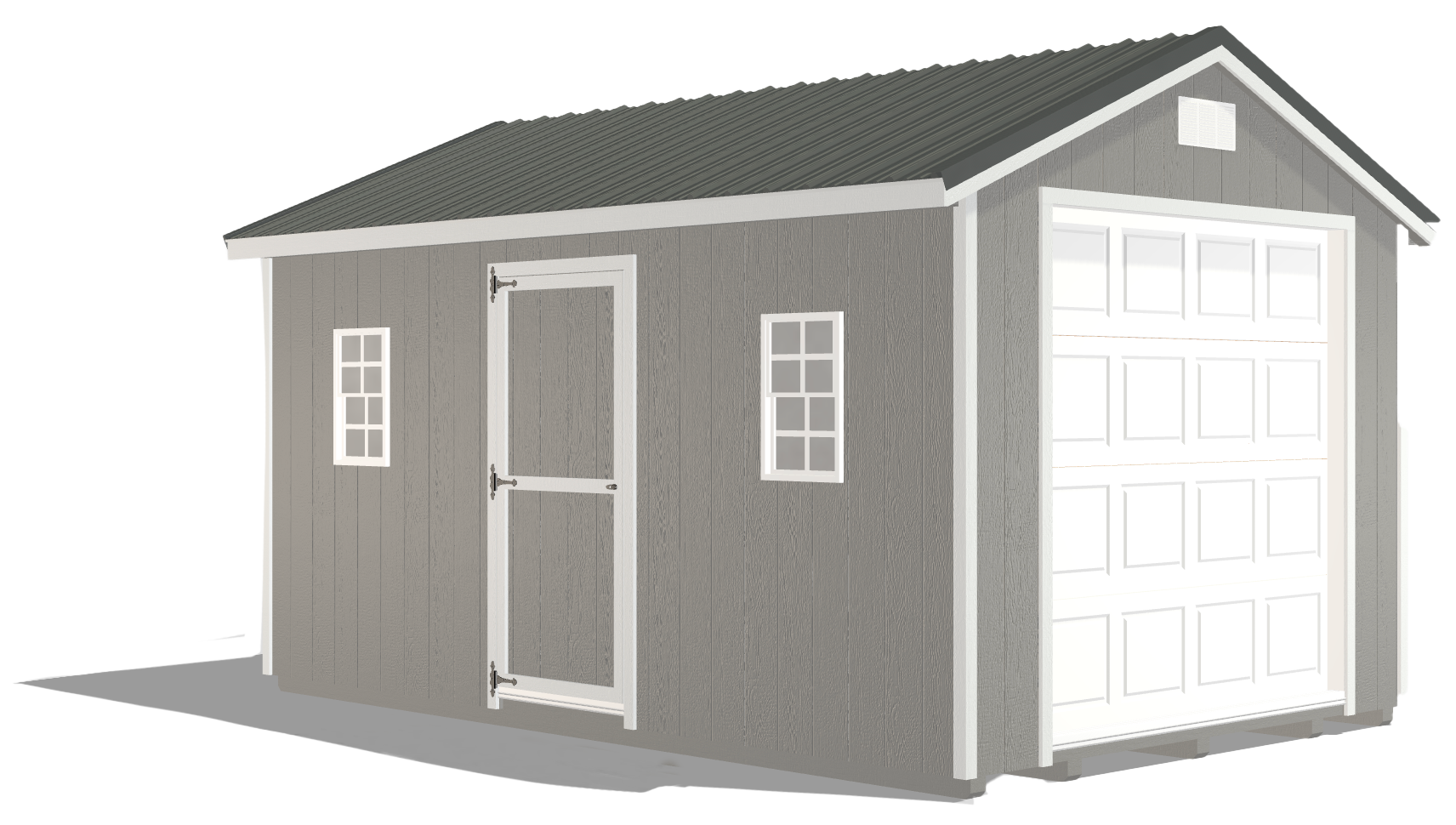What to Grow in Your Four-Season Greenhouse for Fresh Greens
by Dakota Storage Buildings, on May 07, 2025

There’s nothing quite like harvesting fresh, homegrown greens straight from your greenhouse, no matter the season. Whether you’re whipping up a crisp salad in the middle of winter or picking a handful of basil for summer pesto, a four-season greenhouse for backyard gardening gives you the ability to grow leafy greens all year long.
With a greenhouse, you don’t have to worry about unpredictable weather cutting your growing season short. Instead, you can create the perfect environment for fresh greens all year long.
But to keep a steady harvest, it’s important to choose the right varieties, fine-tune your growing conditions, and stay ahead of common greenhouse challenges. A little planning goes a long way in making sure your greens stay healthy and abundant no matter the season.
So, what are the best greens to grow in your four-season greenhouse throughout the year? Let’s explore the top choices for cool-season, warm-season, and year-round production.
Not all greens thrive in every season, but with the right selection, you can keep your all-season greenhouse productive no matter the time of year.
Cool-Season Greens
Some greens prefer cooler temperatures and can even tolerate light frosts, making them ideal for fall and winter greenhouse growing.
- Lettuce: Romaine and Butterhead varieties are especially suited for colder months, as they tolerate lower light conditions and resist bolting.
- Spinach: Cold-hardy and nutrient-dense, spinach thrives in chilly temperatures and can grow well even with limited sunlight.
- Kale: Known for its resilience, kale can withstand frost and continues growing even in the coldest months with minimal intervention.
Warm-Season Greens
As temperatures rise in your greenhouse, certain greens will thrive under warm conditions.
- Swiss Chard: With its ability to tolerate both heat and cool temperatures, Swiss chard is an excellent option to grow during spring and summer.
- Microgreens: Fast-growing and space-efficient, microgreens are perfect for summer harvests and can be grown on shelves or vertical racks.
- Basil & Other Herbs: Warm-weather herbs like basil, oregano, and cilantro pair well with leafy greens and can be grown together for efficient space use.
Greens That Thrive Year-Round
Certain greens are highly adaptable and can be grown consistently with proper temperature and moisture control.
- Arugula: This fast-growing green adapts to different climates and can be harvested multiple times per season.
- Mustard Greens: With a slight spice and rapid growth cycle, mustard greens grow well in both cool and warm conditions.
- Watercress: A nutrient-rich green that loves consistently moist conditions, making it a great choice for greenhouse cultivation.
Create the Perfect Greenhouse Environment for Four-Season Greens

You must create the right environment for your greens to keep them growing year-round. This means carefully managing temperature, light, water, and humidity to ensure consistent growth and prevent common problems like bolting, disease, and poor yields.
Manage Seasonal Temperature Swings
Each season brings different temperature challenges, and maintaining a stable climate is key to keeping greens from bolting or suffering from cold stress. Sudden fluctuations can weaken plants, slow down growth, and reduce overall yields. Using the right heating, cooling, and ventilation strategies will help create an ideal environment for continuous production.
Winter: Keep temperatures between 45-65°F with greenhouse heaters, thermal insulation, and heat-retaining materials like water barrels or row covers. Cold-hardy greens like spinach and kale can tolerate lower temperatures, but supplemental warmth ensures steady growth.
Summer: Ventilation is essential — use fans, vents, and shade cloths to keep temperatures below 80°F and prevent heat stress. Without proper cooling, delicate greens like lettuce and arugula may bolt, becoming bitter and unproductive. Automated venting systems or roll-up sidewalls can help regulate airflow and temperature naturally.
Maximize Sunlight and Grow Lights
Leafy greens need different amounts of light depending on the season. While most greens prefer indirect or moderate sunlight, adjusting light exposure throughout the year can prevent slow growth in winter and premature bolting in summer.
Winter: Shorter daylight hours and low sun intensity can slow down plant growth. Supplemental grow lights, such as LED or fluorescent bulbs, may be necessary to extend daylight hours and keep greens growing at a steady pace. Position lights to provide even coverage and avoid scorching delicate leaves.
Summer: Too much direct sun can cause bolting — use shade cloths to diffuse harsh sunlight and maintain a more balanced temperature. Some greens, like Swiss chard and mustard greens, tolerate more heat, but delicate varieties like butterhead lettuce benefit from partial shade during the hottest part of the day.
Balance Hydration and Airflow
Proper watering prevents both drought stress and fungal diseases. Leafy greens have shallow root systems, meaning they need consistent moisture to stay healthy, but overwatering can quickly lead to rot and disease.
- Water consistently but avoid overwatering, as this can lead to root rot.
- High humidity can encourage mold and mildew — use fans or dehumidifiers to maintain proper air circulation.
By managing temperature, light, water, and humidity effectively, you’ll create an ideal environment for your leafy greens to flourish all year long.
How to Ensure a Steady Supply of Fresh Greens Year-Round

A successful year-round greenhouse for backyard gardening is about maintaining a steady supply of fresh greens. To keep production going, it's essential to use efficient harvesting techniques and maintain soil health to support continuous growth.
By staggering plantings and replenishing nutrients, you can maximize yields and enjoy fresh greens every season without long gaps between harvests.
The Easiest Way to Extend Your Greens Supply
Rather than planting all at once and ending up with a single large harvest, staggering your plantings every 2-3 weeks ensures a consistent supply of fresh greens. This method allows you to rotate crops efficiently, keeping your four-season greenhouse productive all year.
Leafy greens like lettuce, arugula, and spinach are ideal for cut-and-come-again harvesting, meaning you can harvest outer leaves while the plant continues growing.
Fast-growing greens, such as microgreens and baby lettuce, can be replanted frequently, offering quick harvests in as little as 10-14 days. This makes them perfect for filling in gaps between longer-growing crops.
Pay attention to plant maturity times when planning your succession planting schedule. Some greens, like mustard greens or Swiss chard, take longer to reach full size but can be harvested at multiple stages for different uses.
The Best Ways to Replenish Nutrients and Boost Yields
Healthy soil is the foundation of productive greens. Since leafy greens are nutrient-hungry plants, regularly amending your soil with compost or organic fertilizers helps replenish essential nutrients that are depleted over time.
- Organic matter improves soil structure, enhances moisture retention, and provides a slow release of nutrients for steady plant growth. Adding compost between planting cycles ensures a continuous supply of nutrients.
- Crop rotation is key to preventing disease buildup and avoiding nutrient depletion. Refrain from planting the same type of greens in the same soil for consecutive cycles, as this can lead to soil fatigue and increased susceptibility to pests and diseases.
- Mulch helps retain moisture and suppress weeds, while cover crops, such as clover or rye, can be grown between harvest cycles to naturally restore nutrients and improve soil structure.
By staying proactive about soil health and nutrient management, you’ll create a thriving, all-season greenhouse environment that supports continuous, high-yielding growth for your leafy greens.
Even in a controlled environment, greenhouse for backyard gardening comes with its own challenges. Maintaining the right balance of temperature, humidity, and light throughout the year requires ongoing adjustments to keep plants thriving. With the right strategies in place, you can create a productive, thriving four-season greenhouse that provides fresh produce year-round.
1. Preventing Pests and Diseases
- Watch for common greenhouse pests like aphids, spider mites, and whiteflies — introduce beneficial insects or use organic sprays to control outbreaks.
- Proper ventilation reduces the risk of fungal diseases like powdery mildew, which thrive in damp conditions.
2. Managing Temperature Fluctuations
- Use vents and fans to regulate heat in the summer.
- Insulate your greenhouse and use row covers in winter to protect against sudden cold snaps.
3. Addressing Nutrient Deficiencies
- If you notice yellowing leaves or slow growth, test your soil and add organic fertilizers like fish emulsion or compost tea to restore nutrients.
4. Avoiding Bolting in Warm Weather
- Some greens, like lettuce and arugula, bolt quickly in heat. Extend their growing season by providing shade and watering deeply in the early morning.
- Opt for bolt-resistant varieties when growing in summer.
Keep Your All-Season Greenhouse Thriving
A four-season greenhouse allows you to enjoy fresh, homegrown greens no matter the time of year. By selecting the right crops, managing environmental conditions, and staying on top of greenhouse maintenance, you can keep your greens thriving season after season.
Now’s the perfect time to start planning your year-round greenhouse! Download our Beginner’s Guide to Greenhouse Gardening and take the next step in growing fresh produce all year long.





